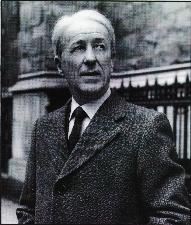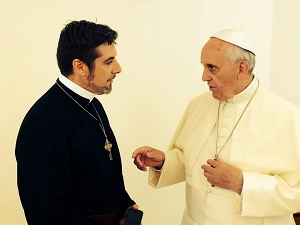The April fool’s joke this year apparently was on the secular skeptics, smarmy and oh-so-hip young Catholic religiös from New Catholic Generation’s Catholics Watch, and myriad other naysaying Nellies. God’s Not Dead 2, which opened in the United States Friday, April 1, rocked the pop culture theater box office with a three-day weekend opening of $7.624 million in box office receipts as of Sunday, April 3, according to Box Office Mojo, the leading online box-office reporting service, operated by Seattle-based Internet Movie Database, (IMDb), which is owned by Amazon.com, and widely considered the number one movie website in the world.
That was a good enough showing for God’s Not Dead 2 to finish fourth that weekend behind Batman v Superman: Dawn of Justice, Zootopia and My Big Fat Greek Wedding 2. All in all, not too shabby, and suggesting some crossover appeal into the ranks of the unchurched. The original God’s Not Dead in 2014 went on to gross more than $60 million in the United States.
Peter Bradshaw, the Guardian’s film critic, huffed in his April 28 review: “The almighty may not be dead, but Nietzsche is rolling in his grave. Angry, smug self-pity is becoming the keynote of the God’s Not Dead Christian movie franchise. This new drama is about how Christians are threatened and oppressed in … well, where do you think? Iraq? Syria? Places where millennia of Christian traditions are genuinely being trashed and their believers in real danger? Erm, no – this film is set in the U.S., where Christians are crushed under the jackboot of sneering liberals and pantomime-villain atheists.” The storyline for God’s Not Dead 2 (you can watch a YouTube trailer here at: https://www.youtube.com/watch?v=Sxz-Y-c2UUc) has public high school history teacher Grace Wesley (played by Melissa Joan Hart) responding to a student’s question about Jesus’ teachings, as they relate to the non-violent teachings of Martin Luther King Jr. and Mahatma Gandhi. The teacher’s response acknowledges that “the writer of the Gospel of Matthew records Jesus as saying, ‘You have heard it said, ‘Love your neighbor and hate your enemy.’ But I tell you, love your enemies, and pray for those who persecute you.” In response to another student’s comment, she adds some additional remarks about those who would die for what they believe.
By the end of the day, the teacher finds herself facing the wrath of the principal, the school board, and her union representative, after a text message from yet another student in the class finds its way to the first student’s parents, who are irate.
Offered the chance to apologize for mentioning Jesus in the classroom, she refuses, asserting that she had done nothing wrong in answering the question. In short order, she is put on leave without pay and a proxy civil action on behalf of the school board by the American Civil Liberties Union (ACLU) follows, as they attempt to have her fired and her teacher’s certificate revoked.
Now, truth be told, I’m a fan of the Guardian. The London-based newspaper is one of the truly serious remaining English-language titles internationally. And Bradshaw’s review is not without merit for pointing out places like Iraq and Syria where Christians are undergoing real persecution today. Point taken. But at the same time it would be naïve to suggest an overt reference to Christianity in American classrooms today is not somehow a potentially high-octane mix that could land a teacher in a major conflagration. So while the point may be overdrawn in God’s Not Dead 2, it, too, has merit and isn’t simply a matter of paranoia on the so-called Christian Right, as some secular liberals would have you believe. The Oberlin Review, established in 1874, and the student newspaper of Oberlin College in Ohio, called God’s Not Dead 2 “a Slice of Trump-Era Propaganda” in a headline for an April 14 review by arts editor Christian Bolles, going on in the piece to call it a “nauseatingly unnecessary follow-up” to the original movie.
In the original God’s Not Dead, released by Pure Flix Entertainment in March 2014 (watch a YouTube trailer here at: https://www.youtube.com/watch?v=bMjo5f9eiX8), Josh Wheaton, an evangelical college student (played by Shane Harper) enrols in a philosophy class taught by Professor Jeffrey Radisson (played by Kevin Sorbo), an atheist, who demands his students sign a declaration that “God is dead” to pass. Josh is the only student who refuses to sign. Radisson requires Josh to debate the topic with him but agrees to let the class members decide the winner. I admit the cosmology, not to mention the philosophy, is pretty convoluted in places to be fully persuasive as Christian apologetics, but when it comes to evolution versus creationism this is a very old and convoluted debate in America, no matter which side you find yourself on. While the debate over competing theories of Darwinian evolution and biblical creationism was famously showcased during the so-called Scopes Monkey Trial in Tennessee in 1925, the resolution of the matter – much to the surprise of secularists who had thought it settled for 50 years – is no closer today than it was in 1925, or when it reignited around 1975.
If anything, the issue is more contested in more venues in more ways than ever, with “intelligent design” now added to the mix in recent years, much to the dismay of secular scientists, other academics and many public school science teachers.
Evolution is the theory that generations of animal and plant species alter and transform over time in response to changes in their environment and circumstances, a process known as natural selection.
Intelligent design is the proposition that scientific evidence exists to show that life in its multitudinous forms was caused by the direction of a higher intelligence. In 1925, prosecutors charged John Thomas Scopes, a high school science teacher in Dayton, Tenn., with teaching evolution, which had just been outlawed. Represented by the famed defense lawyer, Clarence Darrow, Scopes was found guilty and fined after a high-profile trial, but the conviction was later overturned on a technicality, although the statute prohibiting the teaching of evolution remained on Tennessee’s law books until its repeal in 1967.
William Jennings Bryan, a well-known Populist, former Nebraska congressman and three-time candidate for the United States presidency, who delivered one of the most famous and fiery orations in American history almost 30 years earlier in 1896 with his “Cross of Gold” speech at the Democratic national convention in Chicago, denouncing a gold standard monetary policy, argued the prosecution’s case for the State of Tennessee.
Saturday Night Live (SNL), which was perhaps last truly funny around the time it debuted on NBC in 1975 – about the same time the Darwinian evolution and biblical creationism debate reignited – parodied God’s Not Dead 2 last month, which while fair game, came as a surprise probably to exactly no one. Maybe that’s also why SNL last night, 30 years after its debut, brought back former cast member Dana Carvey to resurrect his “Church Lady” sketch, which he performed as character Enid Strict hosting her talk show Church Chat between 1986 and 1993, to deal now with a satanic Ted Cruz and Donald Trump.
New Catholic Generation administrator Renée Shumay, joined by several of her young smirking cohorts, have done at last count at least three Catholics Watch vids on Gods Not Dead 2 since January, two based on trailers, and a more recent one based on the full movie, each being more smarmy than the one before. New Catholic Generation bills itself as a “Catholic teen initiative that uses YouTube to spread the Catholic faith.” God help us. Catholics kids are oh-so-cool don’t you know. And we wonder why evangelical Protestant Christians sometimes question whether Catholics are really Christians?
Ohio-based vlogger Shumay, who has worked for the last year for Eternal Word Television Network (EWTN), is an alumnus of the proud-to-be-orthodox über Catholic Franciscan University of Steubenville, Ohio, I’m embarrassed as a co-religionist to say. If you are in doubt, check them out for yourself at: https://www.youtube.com/watch?v=AcY_wn_6g7E and https://www.youtube.com/watch?v=c0cu_NXEXuU
It’s a very Catholic Thing, the whole “we’re-the-one-true-Church-and-you’re-not” sort of petty one-upmanship. Unfortunately.
Maybe someone should get the word out to Shumay and her New Catholic Generation hotshots that Protestant-bashing masquerading as pop culture criticism is not so cool in 2016.
While it doesn’t get nearly as much attention as the sex-and-morality hot-button issues of his pontificate, although it does garner some coverage, one of the most interesting facets of Pope Francis in action is to watch is his truly remarkable rapprochement with Protestants, particularly evangelicals of all denominations, including his now famous impromptu iPhone video message two years ago for Kenneth Copeland, and other influential evangelicals, done during a January 2014 three-hour breakfast meeting chat at the Vatican with his close personal friend Bishop Tony Palmer, 48, of the Communion of Evangelical Episcopal Churches, a close personal friend of the Pope’s, dating back to their days in Buenos Aires in Argentina. Tragically, Palmer died about six months later on July 20, 2014 in hospital following hours of surgery after a motorcycle accident.
Pope Francis, along with his meetings in 2014 with Palmer, and Copeland, co-host of Believer’s Voice of Victory, also met with James and Betty Robison, co-hosts of the Life Today television program, Rev. Geoff Tunnicliff, chief executive office of the World Evangelical Alliance; well-known Canadian evangelical leader Brian Stiller, Rev. Thomas Schirrmacher, also from the World Evangelical Alliance, and Rev. John Arnott and his wife, Carol, co-founders of Partners for Harvest ministries in Toronto. That meeting lasted almost three hours and included a private luncheon with Pope Francis.
God’s not dead. But Catholic “we’re-the-one-true-Church-and-you’re-not” sort of petty one-upmanship of those working in the evangelical Protestant Christian filmmaking genre should be. If young Catholics’ big knocks against that Christian movie genre are too many heavy-handed theological scripts, clunky acting or cheesy sets that do little more than preach to the choir, we eagerly await their contributions alongside Pure Flix Entertainment to the movie canon.
Criticize or evangelize?
You can also follow me on Twitter at: https://twitter.com/jwbarker22





































